1 / 18
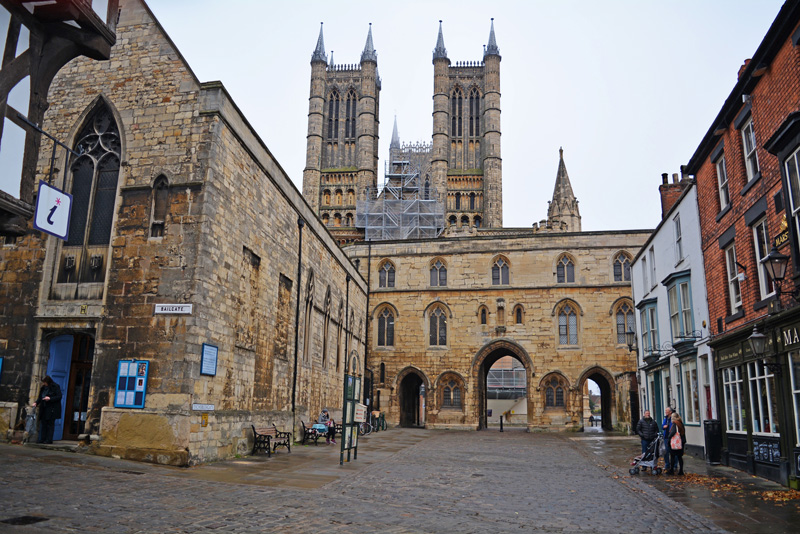
01 The exterior of Exchequergate, the mid-14th-century gatehouse in the west section of the wall that encloses the Cathedral Close
2 / 18
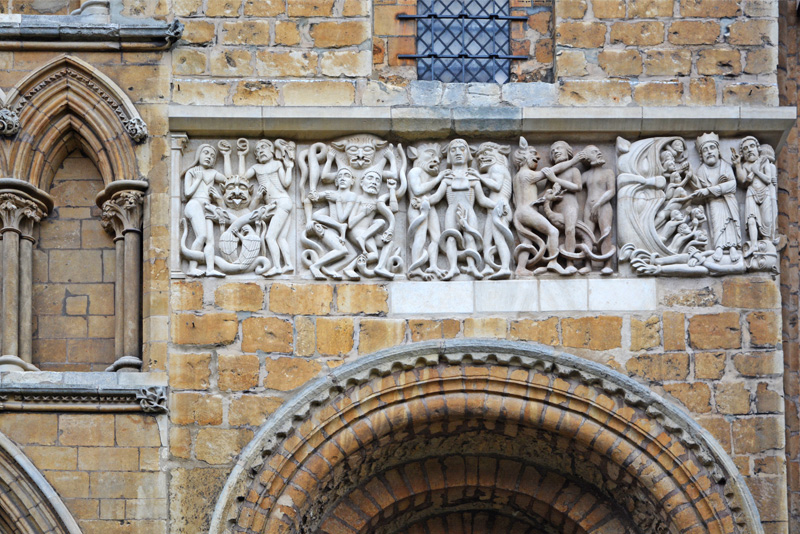
02 Given that 95% of English medieval sculpture was destroyed by iconoclasts in the 16th and 17th centuries, the survival of the Romanesque friezes above the blind recesses adjacent to the aisle doorways at Lincoln assumes enormous importance. By the end of the 1980s the originals had deteriorated so badly that it was decided to remove and conserve them. This replica of the north frieze was installed in 2001. It depicts the rewards of the blessed and the punishments of the damned. On the left the lustful have their genitals gnawed by infernal dragons, while on the right Christ delivers the souls of the pre-Christian faithful from Limbo in the Harrowing of Hell. The blessed are round the corner!
3 / 18
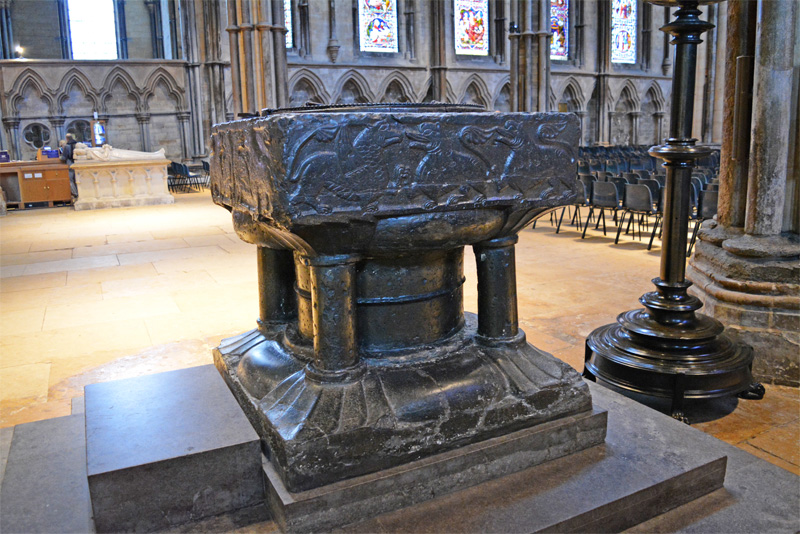
03 The Romanesque font, of black marble, imported from Tournai in the mid-12th century
4 / 18
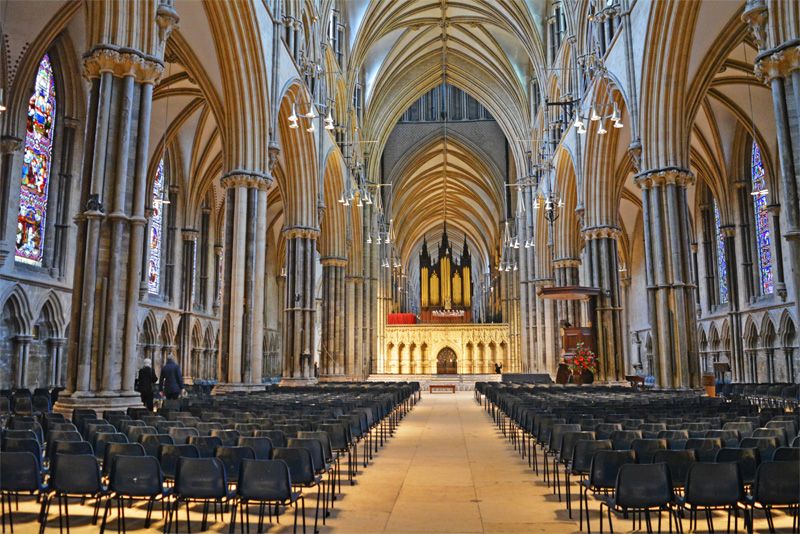
04 The nave, pristine Early English Gothic, towards the east
5 / 18
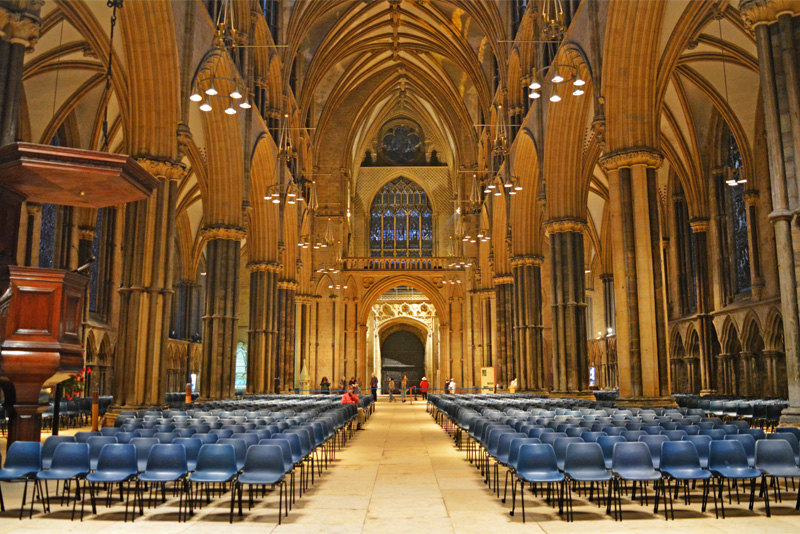
05 The nave towards the west
6 / 18
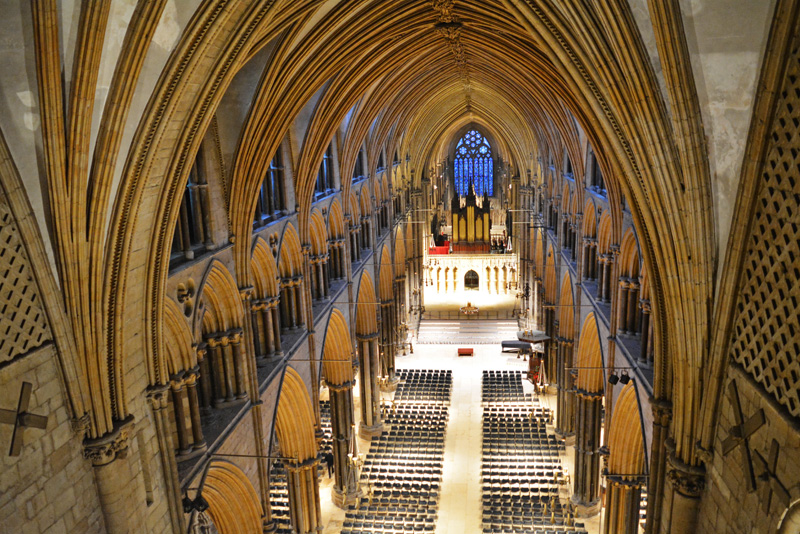
06 The nave, as viewed from the gallery beneath the rose window of the west front, a view familiar to those who took the roof tour
7 / 18
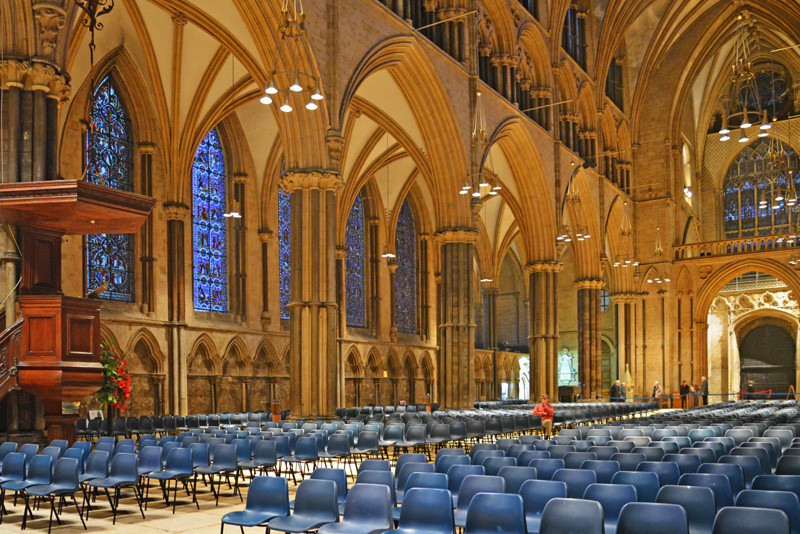
07 The north colonnade of the nave. The tallest figure by the west door is, I believe, Martin Kearns
8 / 18
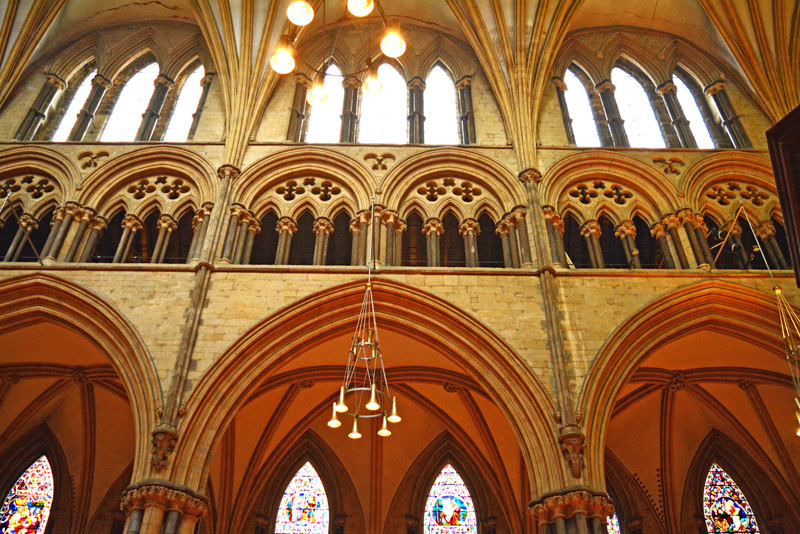
08 A nave bay, view of the triforium and clerestory
9 / 18
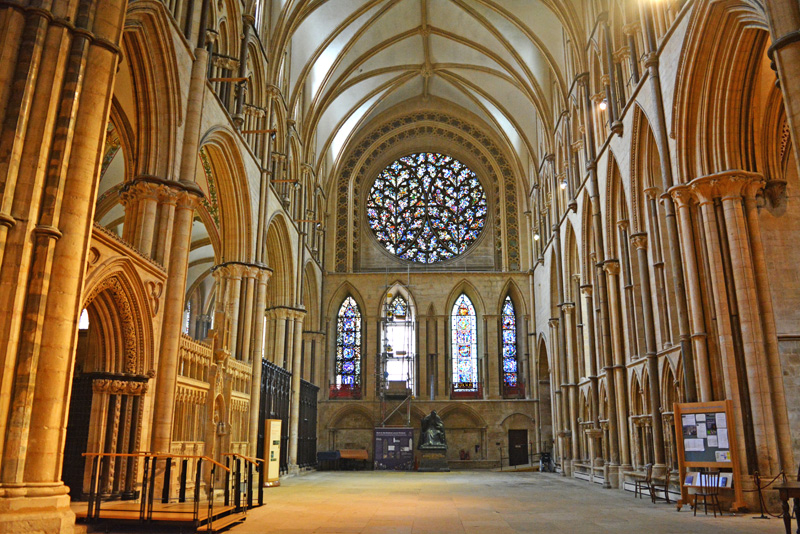
09 The rose window in the south transept, known as the Bishop’s Eye, was rebuilt in its present guise about 1330. The graceful stonework tracery takes the form of two standing leaves. Some of the 14th-century stained glass is still in its original position; the rest of the glazing consists of reused 13th-century fragments
10 / 18
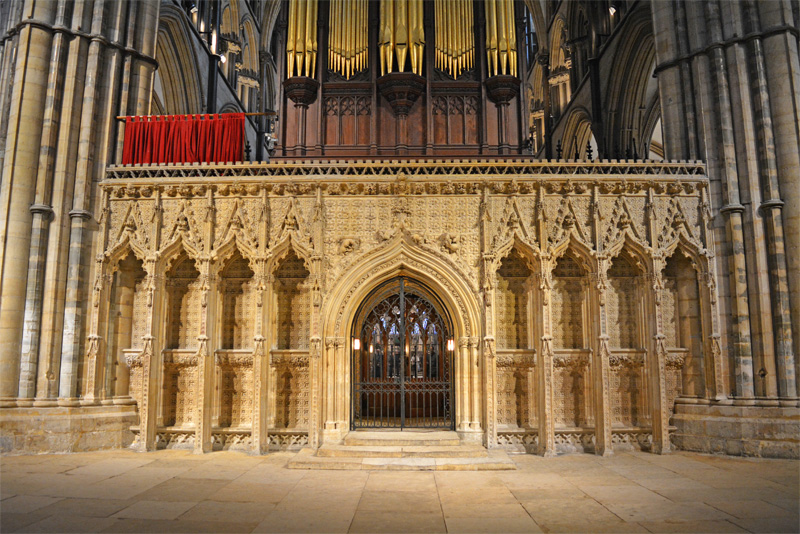
10 The early 14th-century choir screen, a superb example of Decorated Gothic stone carving. Traces of red, blue, and gold indicate that it was once richly coloured
11 / 18
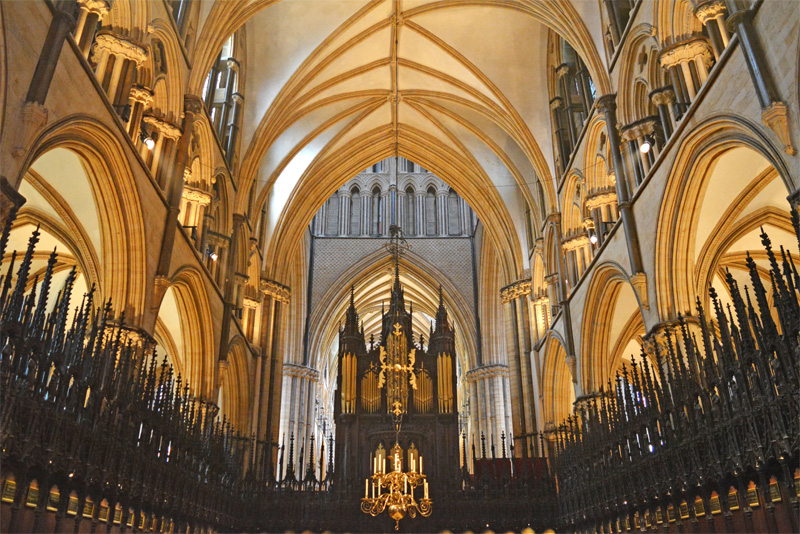
11 St Hugh’s Choir, constructed between 1192 and 1210, looking towards the crossing. Note the experimental asymmetric vaulting. Above the choir screen stands one of the finest church organs in the country, as those present in the cathedral on 16 November can attest. It was built by the renowned Henry Willis in 1898
12 / 18
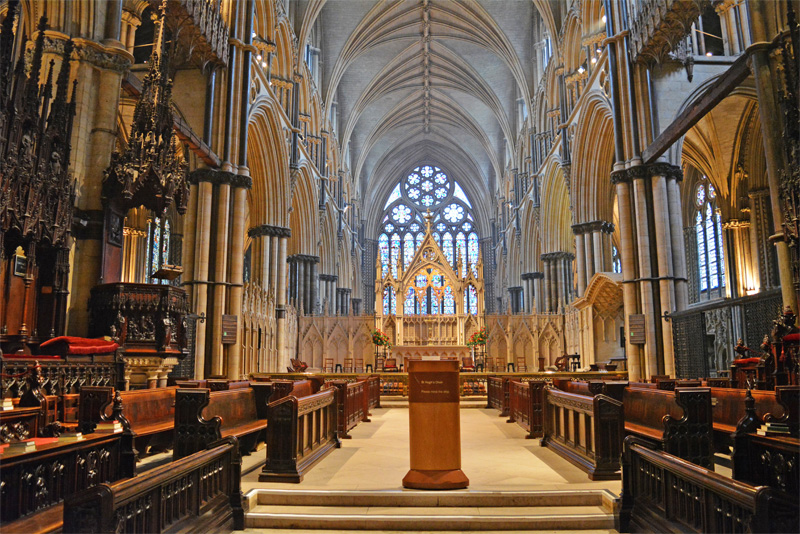
12 The Angel Choir and east window from St Hugh’s Choir
13 / 18
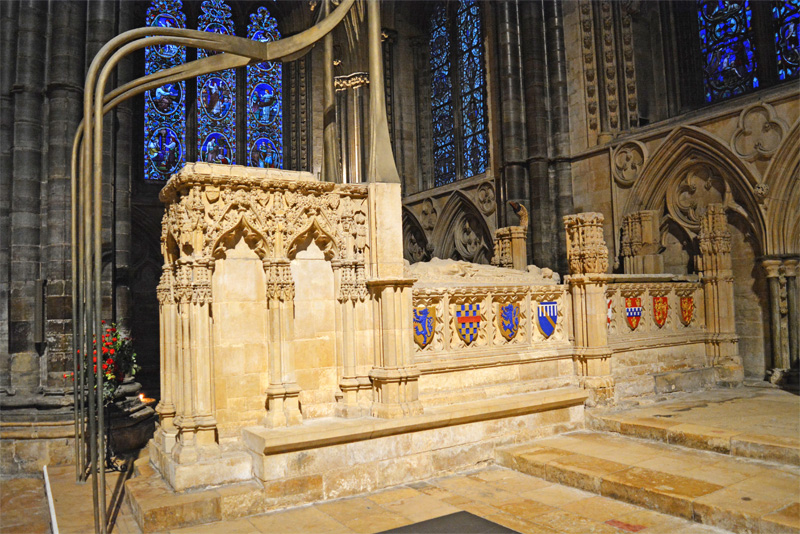
13 When Hugh of Lincoln was canonized by Honorius III in 1220, Lincoln became an important centre of pilgrimage, and in 1280 the saint’s remains were transferred to a splendid shrine in the cathedral’s south transept. Of this nothing remains, but the base of a secondary shrine, the Head Shrine of St Hugh, stands beneath the great east window. The bronze-plated steel canopy by David Poston suggests the back and neck of the swan that famously used to greet and guard the saint at his manor at Stow Park
14 / 18
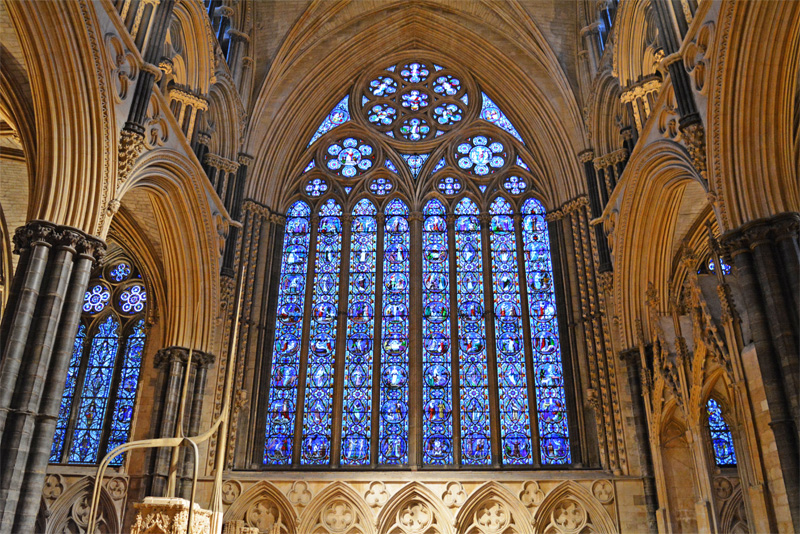
14 The great east window is the earliest example of a Gothic eight-light window, and at 18m tall must have been an awesome sight when it was installed around 1275. The medieval stained glass has been lost: the window was reglazed in 1762 and again in 1855, when the existing glass was designed and fitted
15 / 18
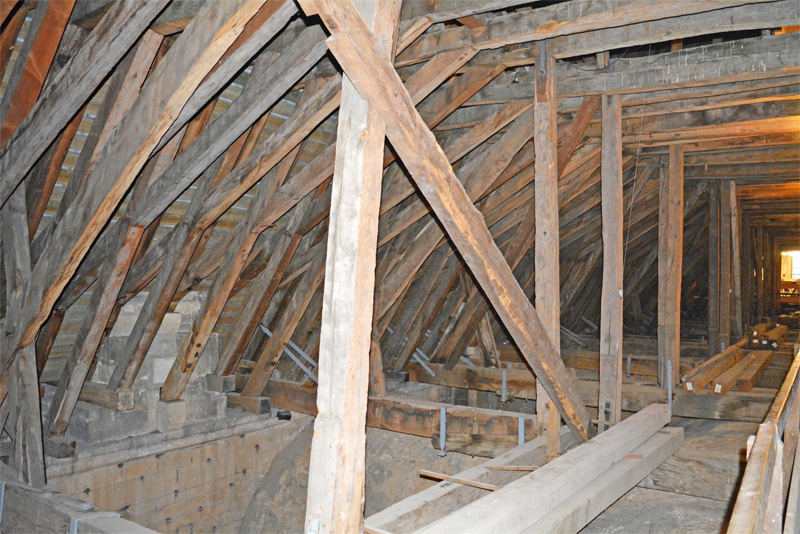
15 Roof timbers above the nave vaults. Dendrochronological studies have dated some of the beams: the oldest discovered would have been a very large mature oak when the roof was rebuilt in the late 12th century and a sapling in the mid-10th century. Six miles north of Lincoln a wood in Aisthorpe, planted with about 3,000 oak trees for the sole use of the cathedral, will help maintain the roof timbers in the future. The trees will be ready in a couple of hundred years. That’s forward planning!
16 / 18
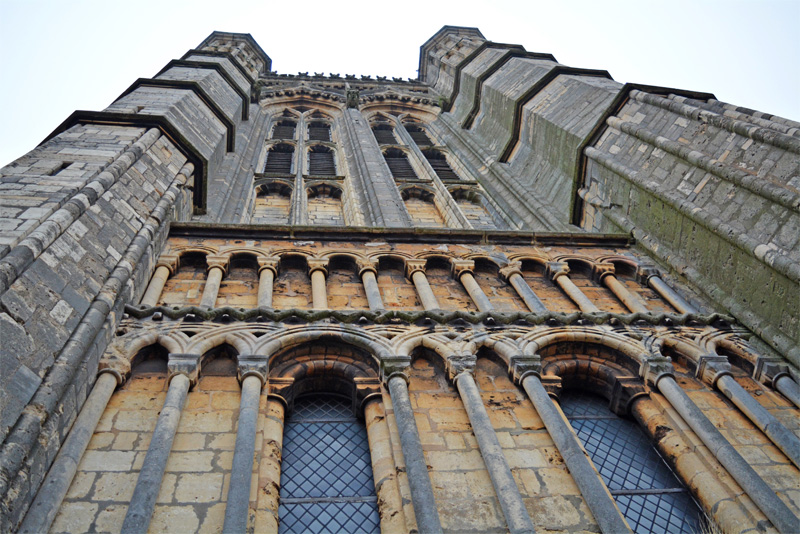
16 The central tower, as rebuilt after the collapse of its Early English predecessor in 1237 or 1239 and further raised to a height of 83m between 1307 and 1311. Above the tower a lead-covered wooden spire reputedly soared to a total height of 160m, making it the world’s tallest structure until the spire was blown down in a storm in 1548
17 / 18
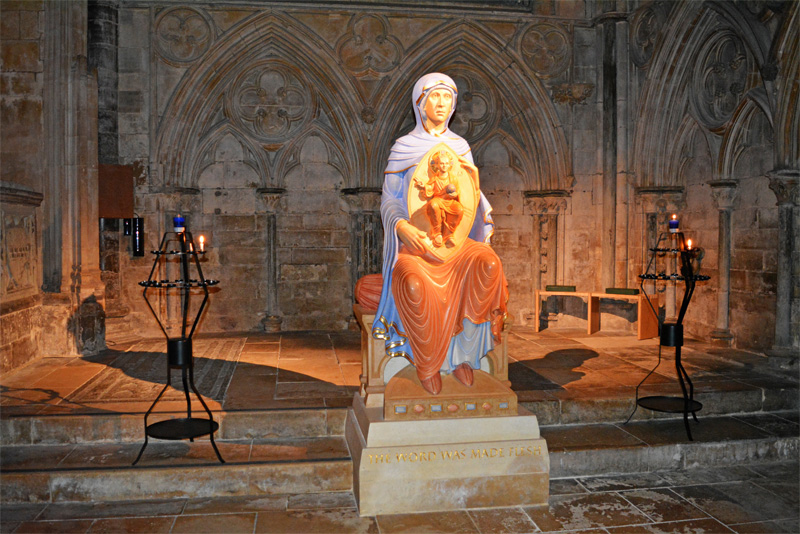
17 Despite the cathedral’s dedication to the Blessed Virgin, no sculpture of Mary graced the interior of the building between the Protestant Reformation and 2014, when this statue was installed. Carved in Lincolnshire limestone by Aidan Hart (a member of the Greek Orthodox Church, whence the Byzantine influence), the sculpture was an ecumenical project funded by both Anglican and Catholic churches in Lincolnshire. In keeping with medieval practice, the statue has been coloured in egg tempera using natural pigments. Singing the Salve, Regina before the illuminated statue at the end of our liturgical celebration of the 818th anniversary of the death of St Hugh is no doubt fresh in the memory of everyone who was there
18 / 18
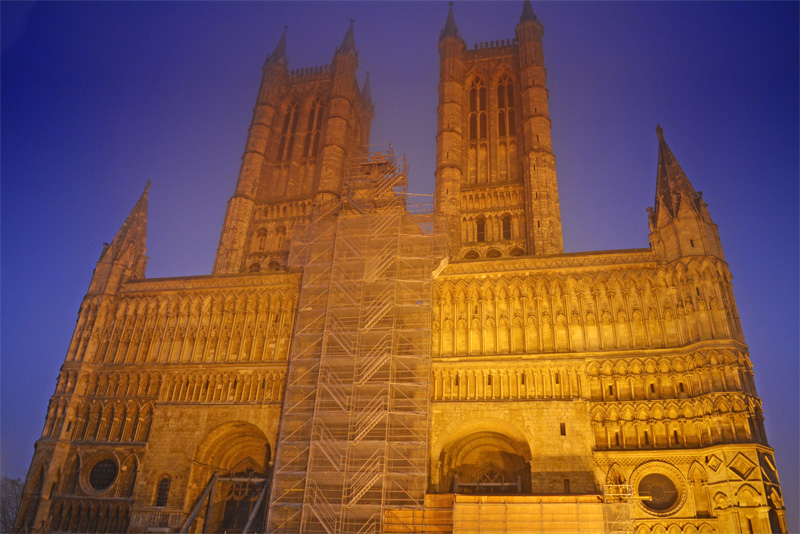
18 The west front in the light drizzle of that November evening. Somewhat obscured by the scaffolding, the massive central block of the façade, with the first bay of its nave and aisles behind it, is all that remains of the Romanesque building begun in 1072 by Remigius de Fécamp, first Bishop of Lincoln, and severely damaged in an unusually violent earthquake in 1185
I have William Arthur Purdy to thank for my abiding interest in architecture. Names like Earls Barton, Huish Episcopi, and Greensted-juxta-Ongar have been lodged in my brain ever since I digested the set book, The Parish Churches of England, in (I think) Syntax (Year 3). In one of his letters and one of his moods, John Ruskin wrote: ‘I have always held and am prepared against all evidence to maintain that the cathedral of Lincoln is out and out the most precious piece of architecture in the British Isles and roughly speaking worth any two other cathedrals we have.’ I first visited the cathedral on a day out from Tollerton (you were allowed to go anywhere on earth except home), hitch-hiking along the Fosse Way with (Mgr) John Corcoran. I couldn’t return without taking a few photographs, some of which I present here.
Spencer Pearce (Lincoln, 1957-1963)
Spencer Pearce (Lincoln, 1957-1963)